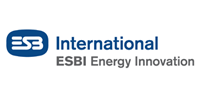ESB International has applied to the Department of Environment, Heritage and Local Government (DEHLG) for foreshore exploration licences in the first step towards developing a 5MW wave energy project off the west coast of Ireland. This will enable the company to conduct marine surveys and resource measurements at two locations, Killard Point, Co. Clare, and the Achill Area, Co. Mayo, in what is called the WestWave project.
The two sites were identified following a detailed selection process based on mapping studies, site testing, environmental considerations and stakeholder feedback.
The WestWave project is a collaborative initiative led by ESBI in conjunction with a number of wave energy technology partners which will generate an initial 5MW of electricity from wave energy by 2015.
The foreshore licences will allow ESBI to deploy wave measurement buoys for a minimum period of one year to assess the wave climate at each site. ESBI will also undertake hydrographic surveys at each site to assess the sea-bed conditions.
The proposed works will provide baseline data on wave and current resources at each site; determine design and installation methodologies; and inform route selection for cables associated with a wave energy project. The survey work will also provide information for environmental studies of the area. These activities will take place over a 12 to 24 month period following receipt of the foreshore exploration licences. The findings will be used to identify the best location for the WestWave project. Currently the sites under consideration are: Killard point, Achill Area and the Atlantic Marine Energy Test Site (AMETS) in Belmullet, Co. Mayo.
ESBI will liaise fully with all the relevant statutory bodies as part of the application process for exploration licences, as required under the Foreshore Acts. To date, discussions have taken place with the DEHLG, Marine Licence Vetting Committee, National Parks and Wildlife, Department of Communications, Energy and Natural Resources, Commission for Energy Regulation, Eirgrid, ESB Networks, An Taisce, Commissioners for Irish Lights, Fáilte Ireland, Geological Survey of Ireland, Marine Institute, Mayo County Council and Clare County Council.
The WestWave project will seek funding under the EU NER300 programme and from domestic grant sources. It will also seek support under the Republic of Ireland REFIT tariff for wave energy. The project is in line with ESBI’s strategy to develop 150MW of electricity from ocean energy by 2020 and the Irish Government’s strategy to generate 500MW from ocean energy in the same period.
Notes
1. The Foreshore Acts require that no works or activity (including the erection of any structures) can be carried out on state-owned foreshore without a licence or lease from the Minister for Environment Heritage and Local Government.
2. The foreshore is the land and seabed between the high water of ordinary or medium tides (shown HWM on Ordnance Survey Maps) and the twelve-mile limit (twelve nautical miles is approximately 22.24km).
3. NER300 is a funding programme which aims to encourage private sector investors and EU Member States to invest in commercial low-carbon demonstration projects. It will be funded from the sale of 300 million emission allowances held in the New Entrants Reserve (NER) of the EU Emissions Trading System (ETS).
4. AMETS is a national wave energy test site which is under development by the Sustainable Energy Authority of Ireland (SEAI). It will be located off Annagh Head, west of Belmullet in County Mayo. The purpose of the test site is to provide a location for the deployment of offshore wave energy machines so that their performance in generating electricity and their ability to survive can be tested and demonstrated in open ocean conditions. ESB International has been involved in assisting SEAI with its development.

